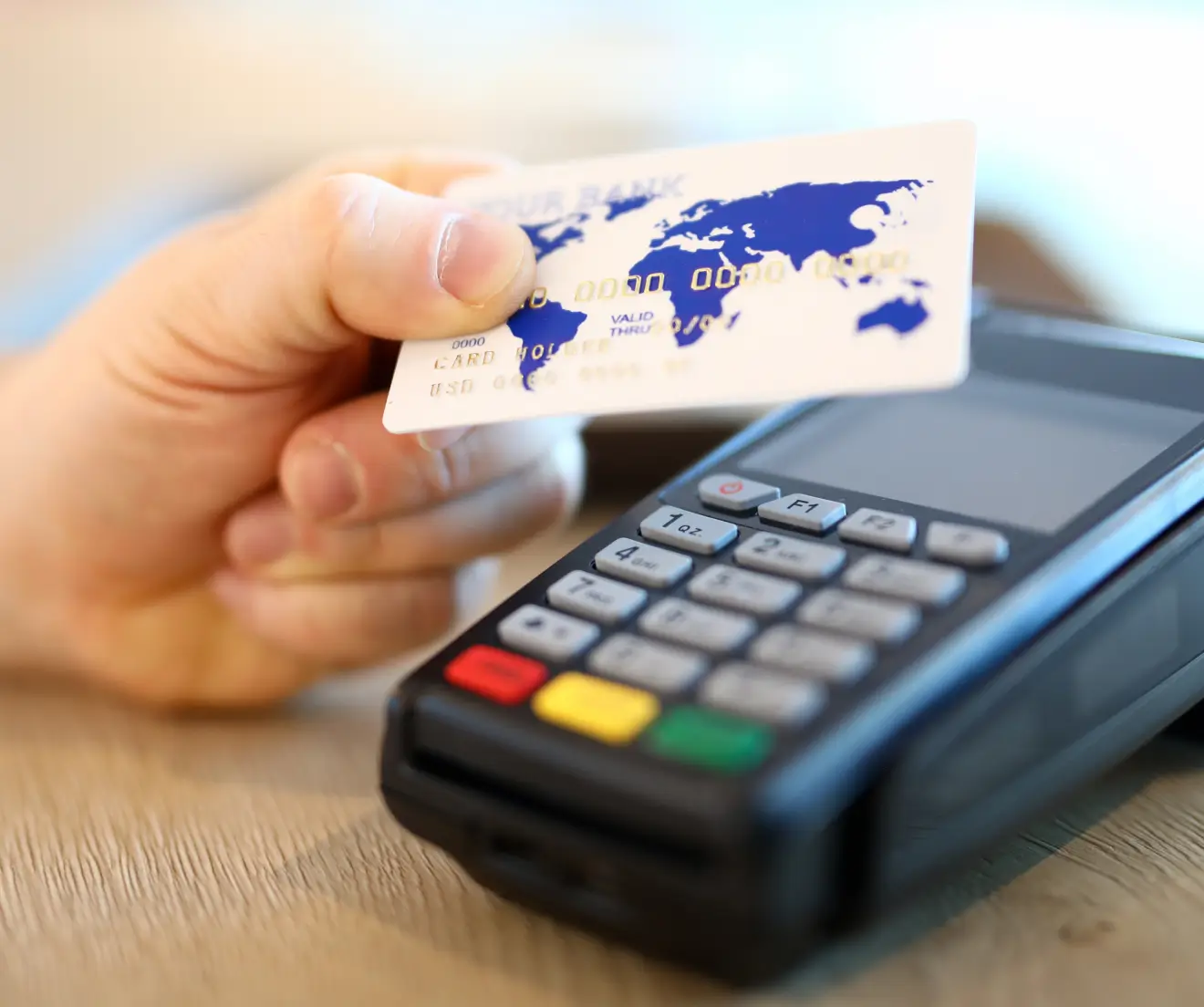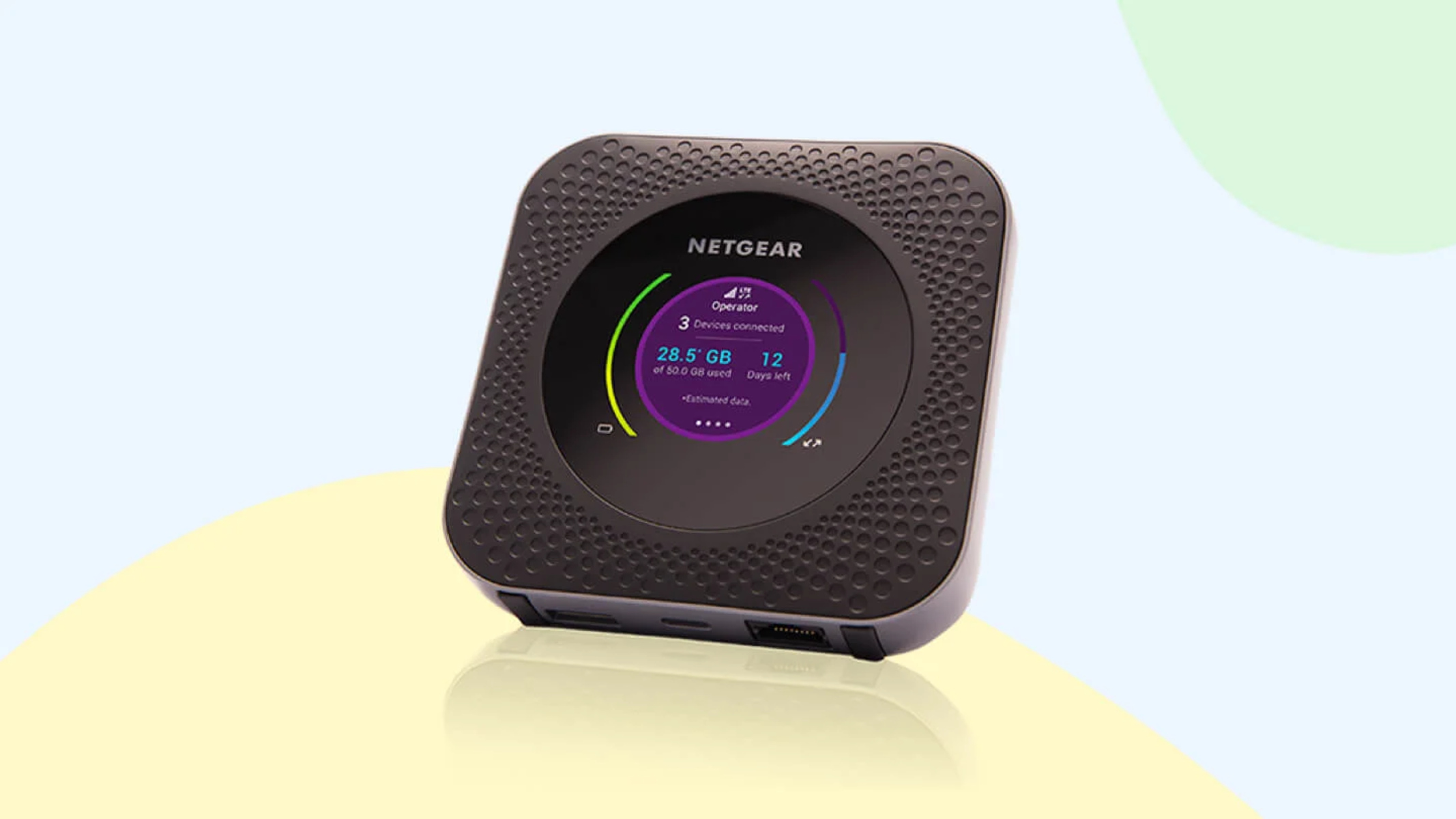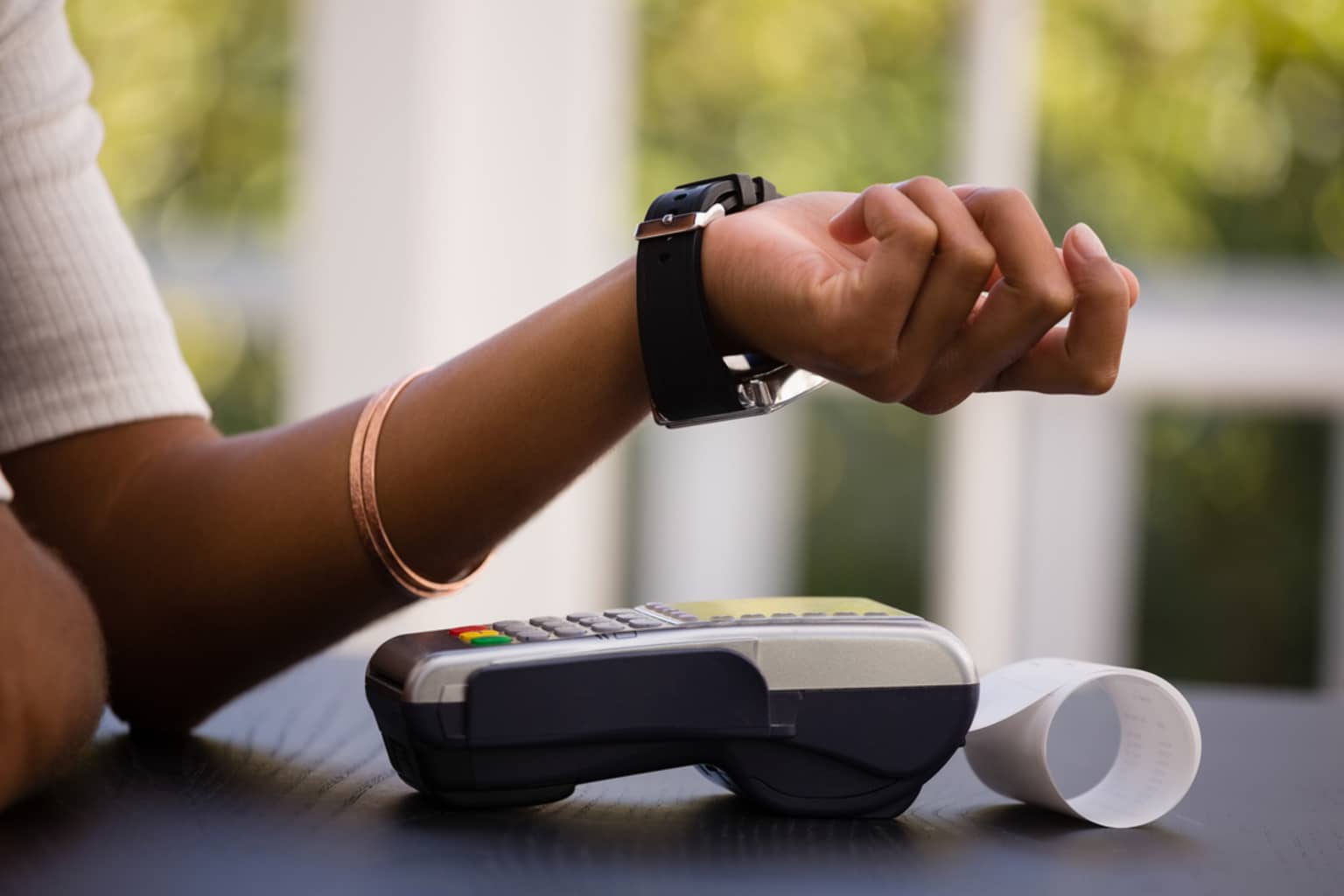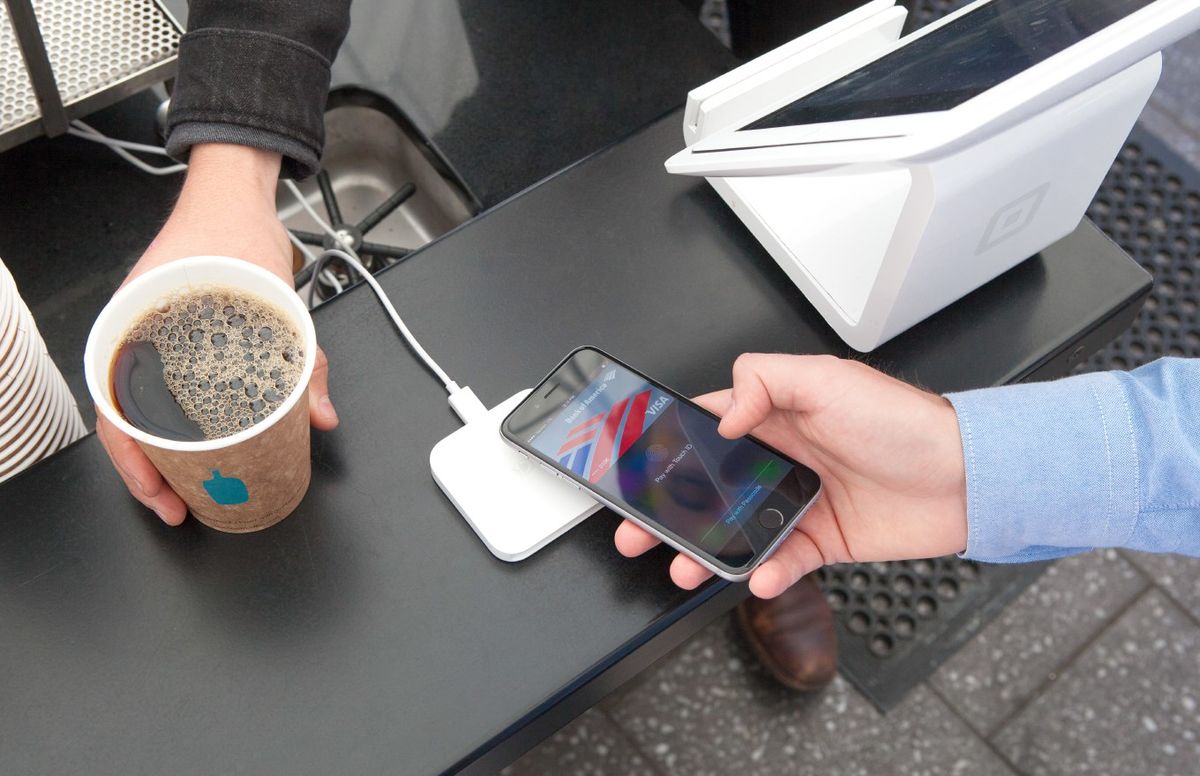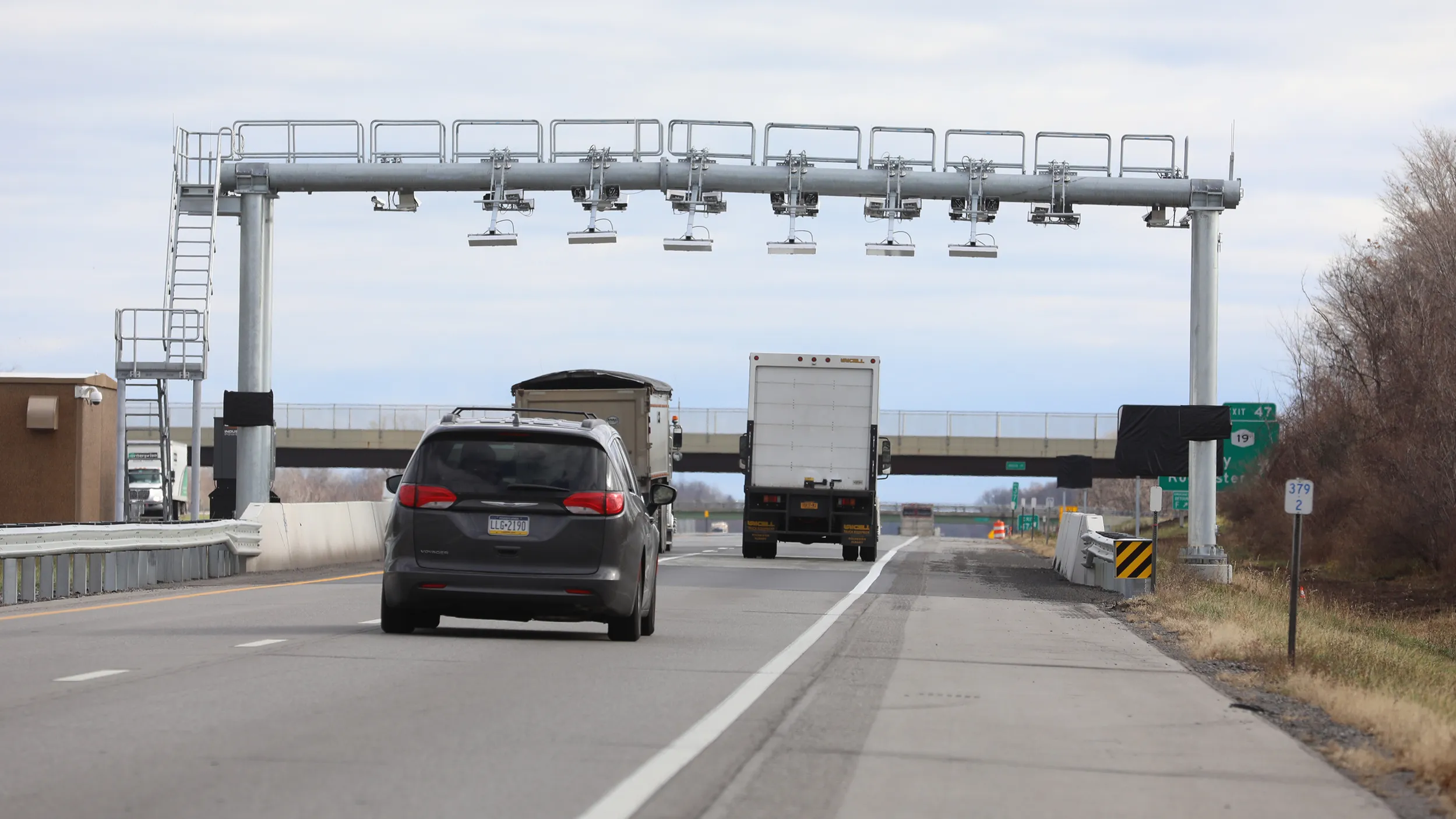Introduction
Welcome to Austin, the vibrant capital of Texas known for its rich history, lively music scene, and a thriving technology sector. As the city continues to evolve, so do the payment methods available to its residents and visitors. In recent years, cashless payments have been on the rise, transforming the way people handle their transactions in Austin and beyond.
The advent of modern technology and the rapid growth of smartphones have paved the way for a cashless revolution. Gone are the days when carrying wads of cash or dealing with loose change was the norm. Today, electronic transactions have become the preferred mode of payment, offering convenience, speed, and security.
Austin has fully embraced this shift towards cashless payments, with businesses and individuals adopting various methods to facilitate seamless transactions. From mobile payment apps to contactless payments, there is an array of options available to cater to everyone’s preferences.
In this article, we will explore the diverse landscape of cashless payments in Austin. We will delve into the benefits of going cashless, the different options available, and how various sectors, including restaurants, retail stores, and even ATMs, are embracing this trend. Additionally, we will examine the challenges that come with a cashless society and address the concerns surrounding security and privacy.
So, whether you’re a resident of Austin or planning a visit to the city, grab your virtual wallet and join us as we navigate through the world of cashless payments in the heart of Texas.
The Rise of Cashless Payments
In recent years, there has been a significant shift in the way people handle their financial transactions, and Austin is no exception. The rise of cashless payments has transformed the way we conduct business and has become an integral part of our daily lives.
This shift can be attributed to several factors. First and foremost, advancements in technology have made it easier than ever to make electronic payments. The widespread use of smartphones and the development of mobile payment apps have made it possible to make transactions with just a few taps on a screen. Whether it’s splitting a bill with friends, purchasing goods online, or paying for services, cashless payments offer unparalleled convenience.
Another driving force behind the rise of cashless payments is the increasing acceptance and availability of contactless payment options. Contactless cards and digital wallets, such as Apple Pay and Google Pay, allow users to make secure, tap-and-go transactions, eliminating the need for physical contact or the exchange of cash. This not only saves time but also promotes hygiene, particularly in a post-pandemic world where minimizing contact is a top priority.
Furthermore, the desire for speed and efficiency in transactions has played a significant role in the popularity of cashless payments. Traditional payment methods, such as cash or checks, often require additional steps, such as counting denominations or writing out checks. With cashless payments, the process is streamlined, allowing for faster transactions and reduced wait times.
Additionally, cashless payments offer enhanced security compared to traditional methods. Carrying large amounts of cash can make individuals vulnerable to theft or loss. In contrast, digital transactions leave a digital footprint, making it easier for individuals to track their expenses and prevent fraudulent activities. Moreover, many payment apps and platforms offer robust security measures, such as encryption and two-factor authentication, providing users with peace of mind.
As a result of these factors, the adoption of cashless payments has seen a sharp increase in recent years. From small businesses to large corporations, cashless payments have become the preferred method of transaction for a wide range of establishments.
In the following sections, we will explore the various benefits of cashless payments, the different options available in Austin, and how different sectors are embracing this cashless trend.
Benefits of Cashless Payments
The shift towards cashless payments in Austin brings forth numerous benefits for both individuals and businesses alike. Let’s explore some of the key advantages that have contributed to the adoption of electronic transactions.
1. Convenience: One of the primary benefits of cashless payments is the convenience they offer. With just a few taps on a smartphone or a quick swipe of a card, transactions can be completed swiftly, eliminating the need for counting cash or hunting for loose change. Whether you’re purchasing groceries, dining out, or booking a ride-share service, cashless payments provide a seamless and hassle-free experience.
2. Speed and Efficiency: Cashless payments are known for their speed and efficiency. Unlike traditional methods of payment, such as cash or checks, where time is spent counting, verifying, or waiting for change, electronic transactions occur in real-time. This means reduced wait times for both customers and businesses, resulting in a smoother and more efficient overall experience.
3. Enhanced Security: Carrying large amounts of cash can be risky. Cashless payments offer enhanced security by reducing the need for physical cash, which can be lost, stolen, or misplaced. Digital transactions leave a trail, making it easier for individuals to track their expenditure. Additionally, many cashless payment methods utilize advanced security measures, including encryption and two-factor authentication, ensuring that personal and financial information remains secure.
4. Hygiene and Contactless Transactions: In the wake of the COVID-19 pandemic, minimizing physical contact has become a top priority. Cashless payments go hand-in-hand with this objective, as they allow for contactless transactions. Utilizing methods such as tap-and-go payments or mobile wallet apps, individuals can minimize the risk of virus transmission associated with handling cash or using physical touchpoints.
5. Transparent Record-keeping: Another significant advantage of cashless payments is the ability to maintain accurate and transparent records of transactions. Most payment apps and platforms provide detailed transaction histories and receipts, making it easier for individuals to track their spending, manage budgets, and simplify financial management.
6. Rewards and Incentives: Many cashless payment apps and platforms offer rewards programs, cashback incentives, or loyalty points for using their services. These rewards can range from discounts on purchases, exclusive offers, or even opportunities to earn additional benefits. By engaging in cashless transactions, individuals can take advantage of these incentives and maximize their savings.
By embracing the benefits of cashless payments, both individuals and businesses in Austin can enjoy a more convenient, secure, and efficient financial experience. As we delve deeper into the article, we will explore the specific cashless options available in Austin, including mobile payment apps, contactless payments, as well as trends within restaurants, retail stores, and ATMs.
Cashless Options in Austin
Austin has fully embraced the cashless revolution, offering a wide array of options for conducting electronic transactions. Whether you prefer mobile payment apps or contactless payments, there are numerous cashless options available throughout the city.
1. Mobile Payment Apps: Austin residents and visitors have access to popular mobile payment apps such as Apple Pay, Google Pay, and Samsung Pay. These apps allow users to securely link their credit or debit cards and make payments with just a tap of their smartphones. Additionally, many local businesses in Austin have adopted these mobile payment options, making it convenient for customers to use their preferred payment method.
2. Contactless Payments: Contactless payments have gained immense popularity in Austin, particularly in the wake of the COVID-19 pandemic. Many businesses, ranging from grocery stores to restaurants, have implemented contactless payment terminals, allowing customers to make secure tap-and-go transactions using contactless cards or mobile wallet apps. This not only provides a convenient and hygienic payment option, but it also eliminates the need for physical touch or the exchange of cash.
3. Online Payment Platforms: With the rise of e-commerce and online shopping, online payment platforms have become essential for making secure transactions. Platforms such as PayPal, Venmo, and Square provide users with the ability to send and receive money electronically, making online purchases and peer-to-peer payments effortless. These platforms often offer buyer protection and secure payment processing, enhancing the overall experience for both buyers and sellers.
4. Digital Wallets: Digital wallets have gained traction in Austin, allowing individuals to store their payment information securely on their smartphones. With apps like Apple Wallet and Google Wallet, users can store their credit or debit card details, loyalty cards, and even event tickets in one convenient location. This makes it easy to access payment methods and loyalty programs with just a few taps on the screen.
5. Self-Service Kiosks: Self-service kiosk options have also become prevalent in Austin, particularly in the restaurant industry. Many quick-service and fast-casual restaurants now offer self-ordering kiosks where customers can customize their orders and make payments electronically. Not only does this streamline the ordering process, but it also reduces wait times and improves efficiency.
Whether you’re dining out, shopping, or conducting business in Austin, these cashless options provide convenience, speed, and security. As the city continues to evolve, it’s likely that more innovative cashless solutions will emerge, further shaping the landscape of electronic payments in Austin.
Mobile Payment Apps
In the era of smartphones and digital connectivity, mobile payment apps have revolutionized the way we handle financial transactions. Austin residents and visitors can take advantage of various mobile payment apps to make secure, convenient, and cashless payments.
1. Apple Pay: Apple Pay is a popular mobile payment app available to iPhone users. It allows users to link their credit or debit cards to their Apple Wallet and make payments at participating stores, restaurants, and online merchants. With the added security of Touch ID or Face ID authentication, Apple Pay offers a seamless and secure payment experience.
2. Google Pay: Google Pay is another widely used mobile payment app that works on both Android devices and iPhones. Similar to Apple Pay, users can add their credit or debit cards and use their smartphones to make payments. Google Pay also offers the convenience of storing gift cards, loyalty cards, and transit passes, enabling users to streamline their digital wallets.
3. Samsung Pay: Samsung Pay is exclusive to Samsung phone users and offers a versatile mobile payment solution. It utilizes both near-field communication (NFC) and magnetic secure transmission (MST) technology, allowing users to make payments at traditional magnetic stripe card readers in addition to contactless terminals. This compatibility expands the usability of Samsung Pay, making it widely accepted at various establishments in Austin.
4. Venmo: Venmo is a popular peer-to-peer payment app that allows individuals to send and receive money effortlessly. It is particularly useful for splitting bills, reimbursing friends, or making quick payments to individuals. Venmo simplifies the process by connecting directly to users’ bank accounts or credit cards, making transactions seamless and providing a social element where users can share payment details and interact with friends on the app.
5. Square Cash (Cash App): Square Cash, also known as Cash App, is widely used for both peer-to-peer payments and merchant transactions. Users can link their bank accounts or debit cards to send money to others or make payments at businesses that accept Cash App. Cash App also offers a unique feature called Cash Card, a physical debit card linked to the app balance, allowing users to make payments in-store or withdraw cash from ATMs.
6. PayPal: While not a dedicated mobile payment app, PayPal’s mobile app allows users to send and receive money, make online purchases, and even donate to charities seamlessly. With its wide acceptance and robust security measures, PayPal is a trusted and reliable option for cashless transactions in Austin.
With these mobile payment apps, the residents and visitors of Austin have a variety of options to choose from based on their device preferences and banking affiliations. These apps offer convenience, security, and a streamlined payment experience, making cashless transactions accessible to anyone with a smartphone.
Contactless Payments
Contactless payments have surged in popularity in recent years, offering a convenient and secure alternative to traditional payment methods. Austin has embraced this trend, with many businesses and establishments adopting contactless payment options, giving residents and visitors a seamless cashless experience.
Contactless payments utilize near-field communication (NFC) technology, allowing users to make transactions by simply tapping or hovering their contactless-enabled cards, smartphones, or smartwatches near a payment terminal. Here are some key aspects of contactless payments in Austin:
1. Contactless Cards: Many financial institutions issue contactless-enabled credit and debit cards to their customers. These cards have a small symbol on them, indicating that they can be used for contactless payments. Users can tap their cards on a contactless-enabled payment terminal to complete a transaction quickly and securely.
2. Mobile Wallets: Mobile wallet apps, such as Apple Pay, Google Pay, and Samsung Pay, enable users to make contactless payments with their smartphones. By adding their credit or debit card information to the app and authenticating using biometric security features like fingerprint or facial recognition, individuals can simply hold their smartphones near a contactless terminal to complete a transaction.
3. Smartwatches: With the rise of wearable technology, contactless payments have extended to smartwatches. Users can link their credit or debit cards to their smartwatches and make payments by placing their wrists near a contactless payment terminal. This hands-free payment experience adds convenience and simplicity to transactions.
4. Transit and Access Cards: Contactless payments also extend to transportation systems and access control cards. Austin’s public transportation system, Capital Metro, has introduced contactless payment options, allowing commuters to tap their contactless cards or mobile wallets to pay for fares. Additionally, some businesses and venues in Austin utilize contactless access cards for entry, making cashless transactions even more prevalent.
5. Health and Safety: In a world where health and safety have become paramount, contactless payments offer an added layer of protection. By minimizing physical contact and the use of cash, individuals can reduce the risk of spreading germs and viruses. These hygienic benefits have made contactless payments a popular choice among consumers and businesses alike, ensuring a safer and more secure transaction experience.
As the acceptance of contactless payments continues to grow in Austin, more businesses and establishments are embracing this technology. From grocery stores to coffee shops, restaurants, and even local markets, contactless payments have become a convenient and reliable option for conducting transactions throughout the city.
Whether it’s tapping a card or using a mobile wallet, contactless payments offer the speed, security, and ease of use that modern consumers seek in their financial transactions. It’s clear that contactless payments have become an integral part of Austin’s cashless landscape, providing a convenient and touchless payment solution for residents and visitors alike.
Restaurants and Cashless Trends
The restaurant industry in Austin has witnessed a significant shift towards cashless transactions, driven by the convenience, efficiency, and safety that electronic payments offer. Here are some of the cashless trends that have emerged in Austin’s bustling culinary scene:
1. Mobile Ordering and Payment Apps: Many restaurants in Austin have implemented mobile ordering and payment apps, allowing customers to browse menus, place orders, and make payments directly through their smartphones. These apps streamline the dining experience by reducing wait times and providing a contactless payment option. Customers can pay for their meals using mobile payment apps such as Apple Pay, Google Pay, or the restaurant’s dedicated app.
2. Contactless Payment Terminals: To accommodate the increasing popularity of contactless payments, restaurants in Austin have upgraded their payment terminals to support tap-and-go transactions. Customers can simply tap their contactless-enabled cards or smartphones on the terminal to complete the payment without the need for physical contact or handling of cash. This not only offers convenience but also ensures a safer and more hygienic dining experience.
3. QR Code Menus and Payments: QR codes have become prevalent in the restaurant industry, acting as a bridge between digital payments and menus. Many restaurants in Austin now offer QR codes on tables or menus, allowing customers to scan the code with their smartphones to access the menu, place orders, and make payments online. This contactless approach reduces the need for physical menus, paper receipts, and traditional payment methods.
4. Integrated POS Systems: Point-of-sale (POS) systems that integrate with various payment options have gained popularity among restaurants in Austin. These systems enable seamless integration of different payment methods, including mobile wallets, contactless cards, and online payments. With an integrated POS system, restaurants can efficiently process transactions, track sales, and provide a frictionless payment experience for customers.
5. Splitting Bills Digitally: Splitting bills among a group of diners can sometimes be a challenge. However, many restaurants in Austin now offer digital bill-splitting options through their mobile payment apps or payment terminals. This feature makes it convenient for groups to divide the bill among themselves, reducing confusion and simplifying the payment process.
6. Loyalty and Rewards Programs: Cashless transactions also allow restaurants in Austin to incorporate loyalty and rewards programs seamlessly. By encouraging customers to sign up for loyalty programs or connect their payment apps, restaurants can offer exclusive discounts, promotions, or even freebies based on their spending habits. This not only boosts customer engagement and retention but also adds value to the cashless dining experience.
As the restaurant industry in Austin continues to adapt to changing consumer preferences, cashless trends are expected to play a significant role in enhancing the overall dining experience. From offering contactless payment options to implementing innovative technologies, restaurants in Austin are embracing the convenience and efficiency that cashless transactions bring to both customers and businesses.
Retail Stores and Cashless Trends
Retail stores in Austin are keeping pace with the cashless revolution, embracing innovative payment methods to enhance customer experiences and streamline transactions. Let’s explore some of the cashless trends that have emerged within the retail sector:
1. Contactless Payment Acceptance: Retail stores in Austin have increasingly adopted contactless payment terminals, allowing customers to make payments using contactless-enabled cards or mobile wallets. This trend offers convenience and speed, as customers can simply tap their cards or smartphones near the terminal to complete transactions swiftly and securely, without the need for physical contact or handling cash.
2. Mobile Wallet Integration: Major mobile wallet apps, such as Apple Pay, Google Pay, and Samsung Pay, have gained widespread acceptance among retail stores in Austin. These apps enable customers to make payments with just a few taps on their smartphones, offering a seamless and touchless payment experience. Retailers have integrated their point-of-sale systems to facilitate mobile wallet payments, allowing customers to enjoy the convenience and security of digital transactions.
3. Scan-and-Go Technology: Scan-and-go technology has become increasingly popular in retail stores, particularly in the grocery and convenience store sectors. Customers use their smartphones to scan items as they shop, and the total is tallied in real-time. They can then make a single payment through their preferred digital payment method before leaving the store. This innovative trend simplifies the checkout process, reduces queuing times, and enhances the overall shopping experience.
4. Online and In-App Purchases: E-commerce has experienced remarkable growth, and Austin’s retail stores have adapted by expanding their online presence. Many retailers now offer online shopping options with seamless integration of digital payment methods. Additionally, some stores have developed their own mobile apps, allowing customers to browse products, make purchases, and pay securely within the app. This trend caters to the evolving preferences of customers who seek convenience and flexibility in their shopping experiences.
5. Buy Now, Pay Later Services: Retail stores in Austin have begun partnering with buy now, pay later (BNPL) services, such as Klarna, Afterpay, and Affirm. These services enable customers to split their purchases into installment payments over a specified period without incurring interest. BNPL services provide an alternative payment option that appeals to customers seeking flexibility and affordability, particularly for larger purchases.
6. Loyalty and Rewards Programs: Retail stores in Austin leverage cashless transactions to offer loyalty and rewards programs seamlessly. Customers can link their payment methods to loyalty programs, earning points or receiving exclusive discounts and promotions based on their spending habits. These programs foster customer engagement and build brand loyalty while enhancing the overall shopping experience.
By embracing these cashless trends, retail stores in Austin are enhancing convenience, security, and efficiency for their customers. The adoption of contactless payments, mobile wallet integration, and innovative technologies in the retail sector reflects the city’s commitment to providing a modern and seamless shopping experience.
ATMs and Cashless Options
Automated Teller Machines (ATMs) are an essential part of the banking infrastructure in Austin, providing individuals with convenient access to cash and other banking services. While ATMs have traditionally been associated with cash withdrawals, the rise of cashless payments has prompted ATM operators to offer additional cashless options to meet the evolving needs of customers.
1. Cardless Cash Withdrawals: Many ATMs in Austin now offer cardless cash withdrawal options, allowing customers to withdraw cash from ATMs without inserting a physical card. This feature is typically available through the ATM operator’s mobile app, enabling users to preauthorize a cash withdrawal and receive a unique code. They can then enter this code at the ATM to access their funds, providing a secure and convenient cashless transaction.
2. Digital Wallet and Contactless Payments: Some ATMs in Austin are equipped with contactless payment technology, enabling customers to use their digital wallets or contactless-enabled cards to make payments or initiate transactions. This allows users to conveniently perform tasks such as depositing checks, transferring funds, or paying bills directly through the ATM.
3. Mobile Banking Apps: Many banks in Austin have developed mobile banking apps that allow customers to perform various banking activities, including cashless transactions. These apps enable users to transfer funds, pay bills, or send money to others digitally without the need for physical cash or visits to an ATM. Additionally, some banks offer features such as mobile check deposit, which allows customers to deposit checks using their smartphones, eliminating the need to visit a physical branch or ATM.
4. ATM Network Integration: With the growing popularity of cashless payments, ATM networks in Austin have integrated with popular payment apps and platforms. This integration allows users to locate nearby ATMs and access additional cashless services through their preferred apps. Individuals can check their account balances, initiate transfers, or even withdraw funds through the ATM network’s partnership with these cashless service providers.
5. Enhanced Security Measures: Alongside cashless options, ATM operators in Austin have implemented enhanced security measures to protect customers’ financial transactions. This includes features such as improved encryption, dynamic PIN pads, and fraud detection systems. By maintaining robust security standards, ATM operators ensure that cashless transactions conducted through their machines are safe and secure.
By incorporating cashless options into ATMs, financial institutions in Austin are adapting to the changing preferences of customers who seek convenient, secure, and efficient banking experiences. While cash withdrawals remain an essential function of ATMs, the availability of cardless cash withdrawals, contactless payments, and integration with mobile banking apps creates a more comprehensive and user-friendly cashless ecosystem.
As technology continues to advance, it is likely that ATMs in Austin will continue to evolve, introducing even more innovative features and cashless options to meet the ever-changing needs of individuals and businesses.
Challenges of Cashless Payments
While cashless payments offer numerous benefits, they also come with their fair share of challenges. It is important to be aware of these challenges to ensure a smooth and seamless transition to a cashless society. Here are some of the key challenges associated with cashless payments:
1. Digital Divide: One of the primary challenges of cashless payments is the existence of a digital divide. Not everyone has access to smartphones, internet connectivity, or the necessary digital literacy to fully participate in cashless transactions. This can create inequality and exclusion, as those without access to digital technology may face difficulties in completing financial transactions or participating in the modern economy.
2. Technological Reliability: Cashless payments rely heavily on technology, and any system disruptions or technical failures can disrupt transactions. Power outages, network issues, or software glitches can temporarily render cashless payment systems inaccessible, leaving individuals unable to make payments or access their funds. This highlights the need for robust and resilient technological infrastructure to support cashless payments effectively.
3. Security and Fraud Risks: As with any digital transactions, there are inherent security risks associated with cashless payments. Cybercriminals may attempt to hack into payment systems, steal personal information, or initiate fraudulent transactions. It is crucial for individuals and businesses to adopt strong security practices, such as using trusted platforms, enabling multi-factor authentication, and monitoring account activity to mitigate these risks.
4. Privacy Concerns: Cashless payments involve the collection and storage of personal data related to financial transactions. This raises concerns about consumer privacy and data protection. It is important for businesses and payment providers to have comprehensive privacy policies in place, ensuring that customer information is handled securely and used responsibly.
5. Financial Exclusion: While cashless payments can offer convenience, they can also lead to financial exclusion for individuals who do not have access to bank accounts or credit facilities. Some people, particularly those from low-income or marginalized communities, may rely heavily on cash for their daily transactions. It is important to ensure that alternative payment options are available to cater to the needs of all individuals, promoting financial inclusion and accessibility.
6. Dependency on Infrastructure: Cashless payments are reliant on robust technological infrastructure, including stable internet connectivity and electricity supply. In some areas, particularly rural or remote regions, access to reliable infrastructure may be limited. This poses challenges for individuals and businesses in those areas, hindering their ability to fully participate in cashless transactions.
While these challenges exist, they are not insurmountable. By addressing issues such as the digital divide, strengthening security measures, protecting privacy, promoting financial inclusion, and investing in infrastructure, cashless payments can become more equitable, secure, and accessible for all.
As society continues to adapt to the cashless trend, it is crucial to navigate these challenges wisely, ensuring that the benefits of cashless payments are extended to everyone while addressing the concerns and limitations that arise along the way.
Security and Privacy Concerns
As cashless payments become increasingly prevalent, it is essential to address the security and privacy concerns associated with digital transactions. While cashless payments offer convenience and efficiency, they also present certain risks that individuals and businesses must be aware of. Here are some key security and privacy concerns related to cashless payments:
1. Data Breaches: Cashless transactions involve the exchange and storage of sensitive personal and financial information. This data can be an attractive target for hackers and cybercriminals, who may attempt to gain unauthorized access to payment systems and steal valuable data. Data breaches can result in identity theft, financial losses, and potential damage to an individual’s reputation.
2. Fraudulent Activities: Cashless payments provide opportunities for various forms of fraud, including card skimming, phishing scams, and unauthorized transactions. Criminals may attempt to steal payment card information, trick individuals into revealing their personal data, or exploit vulnerabilities in payment systems. It is crucial to remain vigilant and adopt best security practices to minimize the risk of falling victim to fraudulent activities.
3. Lack of Consumer Control: Cashless payments require individuals to entrust their personal and financial information to payment service providers. This raises concerns about the control and ownership of data. It is essential to understand the privacy policies and terms of service of payment providers, ensuring that personal data is handled responsibly and in compliance with applicable data protection regulations.
4. Payment Card Skimming: Payment card skimming is a common method used by criminals to steal card information. Skimmers are devices that can be installed on payment terminals or ATMs, often undetectable to users. When consumers insert their cards into compromised terminals, the skimmers capture card data, allowing criminals to create counterfeit cards or conduct fraudulent transactions. Regularly checking payment terminals for signs of tampering and using contactless payment methods can help mitigate the risk of card skimming.
5. Privacy Risks: Cashless payments involve the collection and storage of transaction data, enabling companies to build detailed profiles of individuals’ spending habits and preferences. This raises concerns about privacy and data sharing practices. It is important for individuals to understand how their data is being used and to have the ability to control the sharing of their personal information.
6. Social Engineering Attacks: Cashless payments have provided new avenues for social engineering attacks, such as phishing emails, malicious websites, or fraudulent apps that mimic legitimate payment services. Criminals may attempt to trick individuals into revealing their login credentials, payment card details, or other sensitive information. Awareness of common social engineering tactics, using trusted sources for app downloads, and regularly updating security software are essential measures to mitigate the risk of social engineering attacks.
Addressing these security and privacy concerns requires a multi-layered approach. Individuals should regularly update their devices and software, use strong and unique passwords, enable multi-factor authentication, and monitor their accounts for unusual activity. Businesses should invest in robust security measures, implement data protection policies, and prioritize customer education to ensure secure transactions. Additionally, regulatory bodies play a crucial role in establishing and enforcing privacy and security standards to protect consumers.
By proactively addressing security and privacy concerns, individuals and businesses can enjoy the benefits of cashless payments while minimizing the associated risks, fostering a safer and more secure digital payment ecosystem.
Conclusion
Cashless payments have transformed the way we handle financial transactions in Austin. The city has embraced the convenience, speed, and security that cashless options provide, offering a wide array of choices for residents and visitors alike. From mobile payment apps to contactless payments, Austin’s vibrant landscape has adapted to the cashless revolution.
One of the key advantages of cashless payments is their convenience. With just a few taps on a smartphone or a quick tap of a card, transactions can be completed swiftly, eliminating the hassle of carrying and counting cash. Speed and efficiency have become the norm, reducing wait times for customers and enhancing the overall experience.
Furthermore, cashless payments offer enhanced security compared to traditional methods. Digital transactions leave a digital footprint, making it easier to track expenses and prevent fraudulent activities. Encryption, two-factor authentication, and robust security measures ensure that personal and financial information remains secure.
While the benefits of cashless payments are significant, it is important to address challenges and concerns. The digital divide, technological reliability, security risks, privacy concerns, financial exclusion, and dependencies on infrastructure require attention and solutions to ensure inclusivity, resilience, and protection.
Austin’s restaurants and retail stores have embraced the cashless trend, offering mobile payment options, contactless terminals, and innovative technologies to enhance customer experiences. With the rise of contactless payments, businesses are adapting to the changing needs and preferences of consumers, providing convenient and secure transactions.
However, individuals and businesses must remain vigilant and proactive in addressing security and privacy concerns. Protecting personal data, staying informed about fraud risks, and adopting best practices are crucial to maintaining a safe cashless environment.
As Austin continues to evolve, it is evident that cashless payments are here to stay. By understanding the benefits, challenges, and the importance of security and privacy, residents and businesses can navigate the cashless landscape with confidence and take advantage of the endless possibilities that cashless payments offer.







